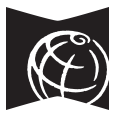Edward S. Curtis Digital Collection
Preview up to 100 items from this collection below. Photographer Edward S. Curtis devoted two decades to making “The North American Indian,” an early 20th century photography and text project studying Western tribes.
-
Letter from Edward S. Curtis to Harriet Leitch, December 17, 1950
Letter from Edward Curtis to Harriet Leitch explaining that his poor health and ever present arthritis has forced him to stop work on "The Lure of Gold." He shares that his friends expressed concern over the time he spend hunched over his desk writing the material and that shelving the manuscript "was a serious blow and hard to take."
Identifier: spl_esc_019
Date: 1950-12-17
View this item -
Letter from Edward S. Curtis to Harriet Leitch, circa March 1949
Note from Edward Curtis to Harriet Leitch responding to her questions about how long he lived in Seattle and how he began taking pictures of Native Americans. In response to the question "How did you get the confidence of the Indians?" Curtis writes "I said we, not you. In other words, I worked with them not at them."
Identifier: spl_esc_010
Date: 1949-03
View this item -
Letter from Edward S. Curtis to Harriet Leitch, September 22, 1950
Letter from Edward Curtis to Harriet Leitch in which he briefly touches on discussing "The Lure of Gold" before moving on to talk about the financial difficulties he experienced while producing "The North American Indian." He writes "[...] once upon a time I was confronted with the North American Indian quota which was 1,800,000 plus. I have always thought that ignorance alone allowed me to tackle that task?" Curtis also touches on his continued struggles with arthritis and shares that his youngest daughter, Billy, has recently moved to Australia with her husband. He says he has encouraged Billy to keep notes on the journey in hopes that she can one day use her talents as a writer to compile a book on the subject. Curtis ends with the story of when he helped to bury Chief Joseph, writing "In order to bury him the second time we had to dig him up: I did most of the digging. It was a very hot day and the Noble Red Men said "let the white men do the digging they know how.""
Identifier: spl_esc_017
Date: 1950-09-22
View this item

